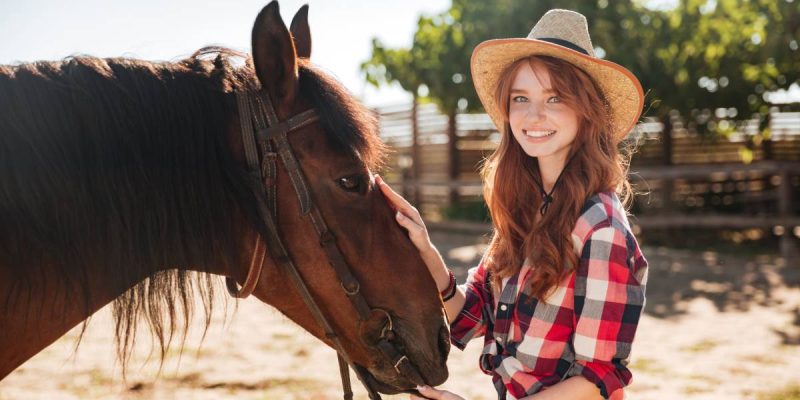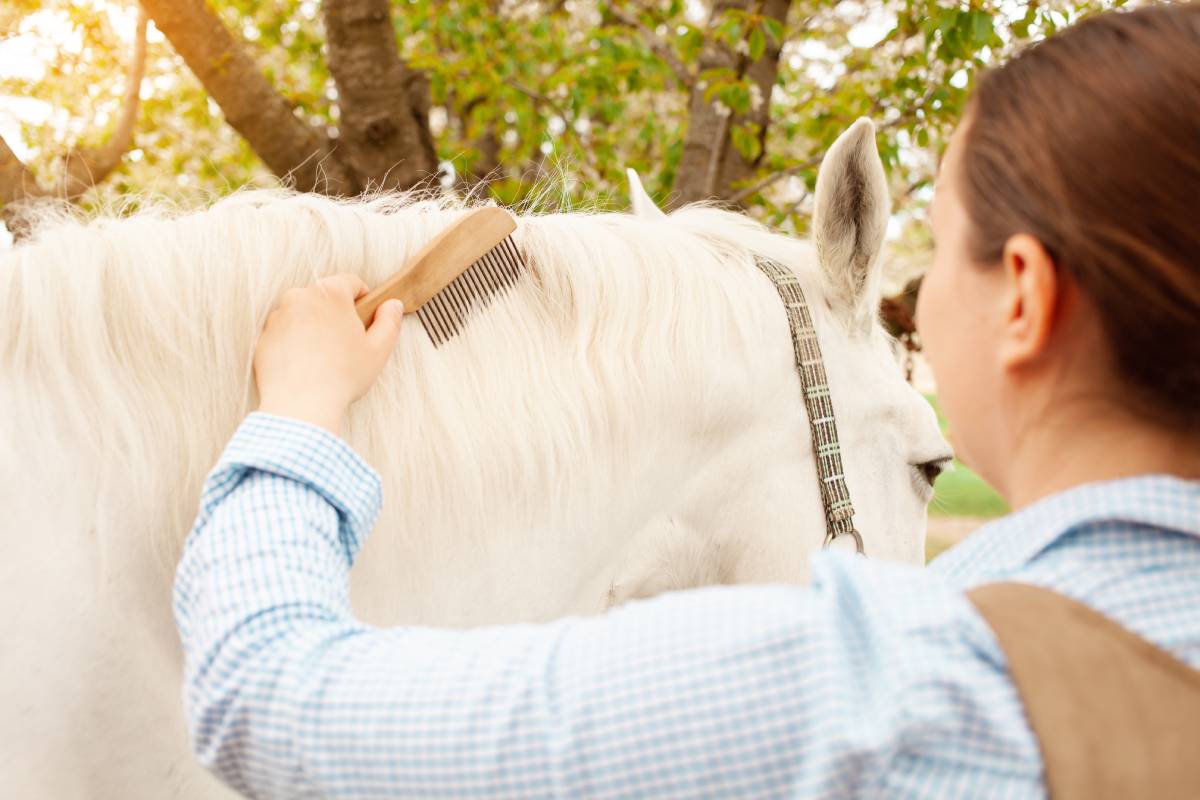Handling a horse for the first time can be exciting yet intimidating, especially for beginners. Horses are large, powerful, and intuitive animals that can form strong bonds with humans.
Whether you’re new to horseback riding or want to learn more about horse care, understanding the basics of handling is crucial for building a safe, positive relationship.
This guide covers key steps for handling a horse, important rules for beginners, and how to recognize a happy horse.
With patience, respect, and proper knowledge, you can develop a rewarding bond with these magnificent creatures.
How to Handle a Horse for Beginners
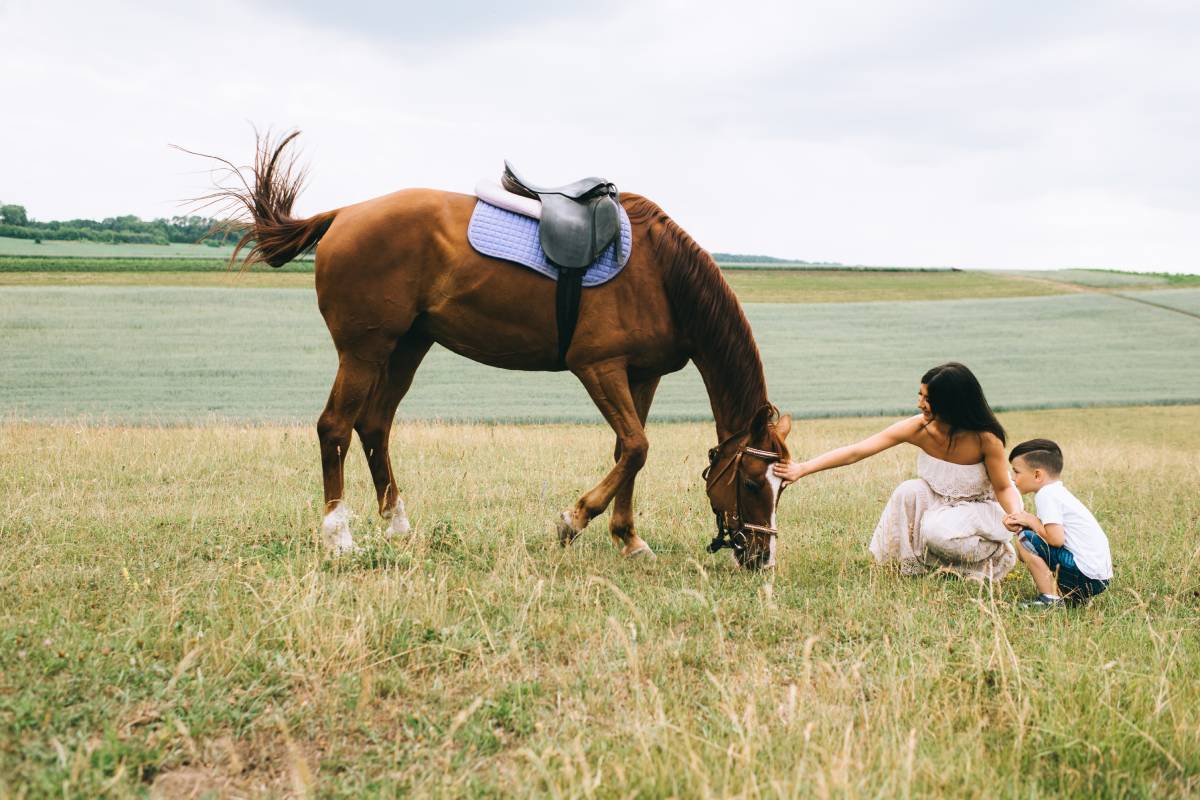
Handling a horse can be a rewarding experience, but it requires patience, knowledge, and a clear understanding of how to approach, lead, and care for the animal.
Horses are powerful creatures with their own personalities and instincts, so understanding the basics of horse handling is essential to building a safe, respectful, and positive relationship with them.
Approaching a Horse for the First Time
When handling a horse, the first and most crucial step is how you approach it. Horses are prey animals, and they are naturally cautious about their surroundings. Sudden movements or loud noises can startle them, so it’s important to approach them calmly and respectfully.
- Stay calm and confident: Horses can sense nervousness or uncertainty, so it’s important to approach them with confidence.
- Approach from the front: Always approach a horse from the front or the side so they can see you coming. Never sneak up from behind, as this could startle the horse and make them feel threatened.
- Speak softly: Horses are very sensitive to sound, so speaking in a calm, gentle voice helps them feel more at ease.
- Use body language: Horses are keenly aware of body language, so ensure you maintain open, relaxed body posture.
Leading a Horse
Once you’ve gained the horse’s trust, leading the animal becomes an essential skill. Leading a horse properly involves more than simply holding the lead rope and walking forward. It’s about maintaining control while ensuring the horse feels comfortable and calm.
- Hold the lead rope correctly: Hold the lead rope in your left hand, about 6 to 12 inches away from the horse’s halter. Keep your hand relaxed but firm. Your right hand should be placed further down the rope, ready to take control if needed.
- Walk at the horse’s shoulder: Always walk alongside the horse, not in front or behind. Being at the horse’s shoulder allows you to maintain control while also staying out of its way.
- Keep a safe distance: Keep a distance of at least a few feet between you and the horse’s body. This gives you enough space to react if the horse suddenly moves or shifts.
Grooming and Bonding with the Horse
Grooming is an excellent way for beginners to build trust with a horse. Regular grooming not only keeps the horse clean and healthy but also provides an opportunity for bonding.
- Start with the basics: Begin by brushing the horse’s body gently using a curry comb to loosen dirt and debris, followed by a stiff brush to remove it. Pay attention to the horse’s body language while grooming; if they seem uncomfortable, give them a break.
- Brush with care: Be gentle when brushing sensitive areas like the face, legs, and belly. Use soft brushes for these areas, and always be mindful of any injuries or sore spots.
- Check for injuries: As you groom, check for cuts, bruises, or other injuries. Horses are often quite stoic, so they may not show pain until it’s significant. Regular grooming can help detect issues early on.
Basic Safety and Handling Tips
While handling horses can be enjoyable, it’s essential to prioritize safety at all times. Here are a few safety guidelines for beginners:
- Wear proper gear: Always wear boots with a heel when working with horses. This helps prevent your foot from slipping through the stirrup if you need to mount the horse.
- Be aware of their blind spots: Horses have blind spots directly in front and behind them. Be cautious when standing in these areas, as a horse may not be aware of your presence and could accidentally step on you.
- Avoid sudden movements: Horses are sensitive to quick or erratic movements, so always move slowly and predictably around them.
- Be cautious around the hindquarters: The back end of a horse is especially dangerous. Always stand beside the horse’s shoulder when grooming, leading, or mounting, and avoid standing directly behind the horse.
- Keep the horse’s space in mind: Horses are large, powerful animals, so maintaining a safe distance from their hooves and legs is crucial.
The 1/2/3 Rule in Horses
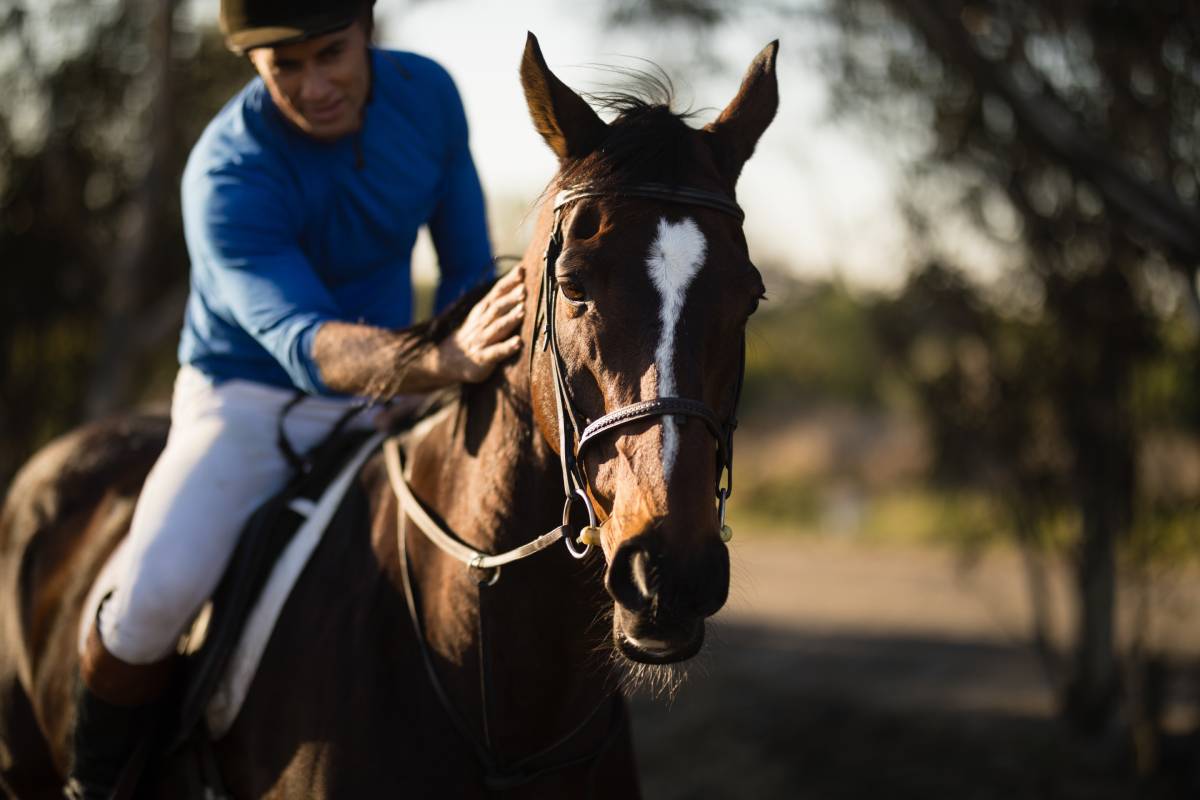
The 1/2/3 rule is a basic guideline that can help you understand a horse’s temperament and manage them safely. It refers to the amount of time it typically takes for a horse to respond to a new situation.
- 1 second: Horses will react immediately to sudden movements or loud sounds. They are quick to respond to anything that startles them, whether it’s a loud noise or a fast movement.
- 2 seconds: Horses take a moment to assess what is going on around them. If the situation is not immediately alarming, they will begin to process it and decide how to react. During this phase, the horse is determining whether to flee, stand still, or engage.
- 3 seconds: This is the time it takes for a horse to calm down after something surprising happens. They might still be alert, but after a few seconds, they begin to regain their composure. A horse that has been startled will begin to settle after about three seconds.
Understanding this rule can help you handle horses more effectively. By recognizing how they process information and react to new stimuli, you can avoid spooking them and create a more positive experience.
What Does a Horse Look Like When It’s Happy?
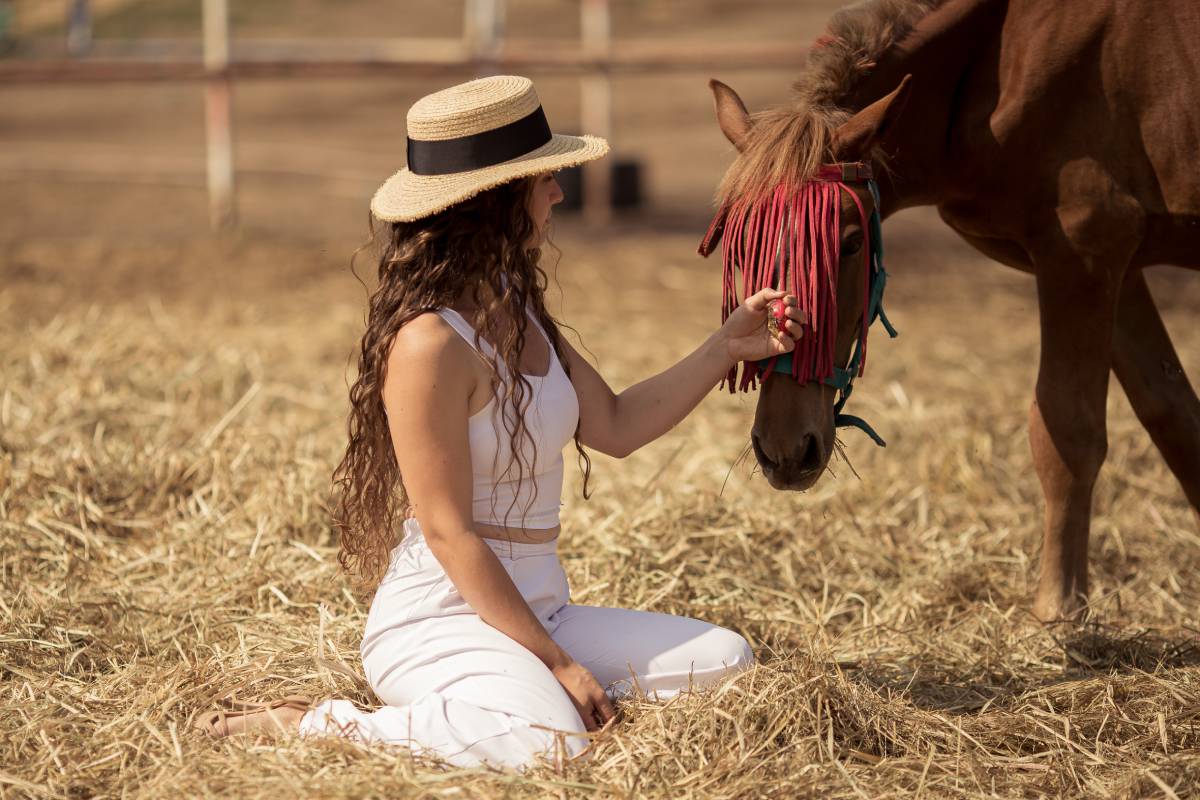
Knowing when a horse is happy and comfortable is crucial for beginners. A horse’s body language provides valuable cues about its emotional state. Here’s what to look for when determining if a horse is happy:
- Relaxed posture: A horse that is happy will stand with a relaxed body posture, with its head slightly lowered and ears at rest or turned slightly forward.
- Soft eyes: A happy horse will have soft, relaxed eyes. If a horse’s eyes are wide and alert, it may be anxious or fearful.
- Gentle movements: Happy horses move with fluid, relaxed movements. If the horse is stiff or agitated, it may be uncomfortable or upset.
- Friendly interactions: If a horse is happy, it may nuzzle or gently nudge you as a sign of affection or curiosity. These behaviors show that the horse feels safe and content.
- Tail position: A horse’s tail can also indicate its emotional state. A relaxed, gently swishing tail suggests happiness, while a tail held stiff or tucked between the legs can indicate fear or discomfort.
Building a Positive Relationship with Your Horse
Handling a horse is not just about physical care; it’s also about building a trusting relationship. Horses are intelligent animals, and they can form strong bonds with humans. Here are some tips for strengthening the bond between you and your horse:
- Spend time together: Spend quality time with your horse outside of riding or working. This helps build a connection and makes the horse more comfortable with you.
- Be consistent: Horses respond well to consistency. Establish a routine for feeding, grooming, and other care activities. This predictability helps the horse feel safe.
- Learn their body language: Pay attention to the horse’s behavior and learn how they communicate through body language. This will help you understand their needs and emotions better.
- Be patient: Building trust takes time, and each horse is different. Be patient and allow the horse to learn to trust you at its own pace.
A Horse Lover’s Paradise
For those in or visiting the Hunter Valley it offers a great environment for learning about horse handling.
Known for its stunning landscapes, it’s a popular destination for equestrian activities such as horse riding, trail rides, and horse care education.
Whether you’re just starting out or have some experience, the Hunter Valley provides the perfect backdrop for developing your skills in handling and bonding with horses.
Conclusion
Handling a horse is an art that requires knowledge, patience, and respect for the animal. Beginners should approach the process with care and always prioritize safety.
The 1/2/3 rule provides insight into a horse’s reaction time, helping you predict how they will respond in different situations.
Understanding the signs of a happy horse and how to build a positive relationship will ensure that your experience with horses is enjoyable and fulfilling.
As you continue to handle and care for horses, remember that every step you take toward understanding them will build a deeper bond and a safer, more respectful partnership.

